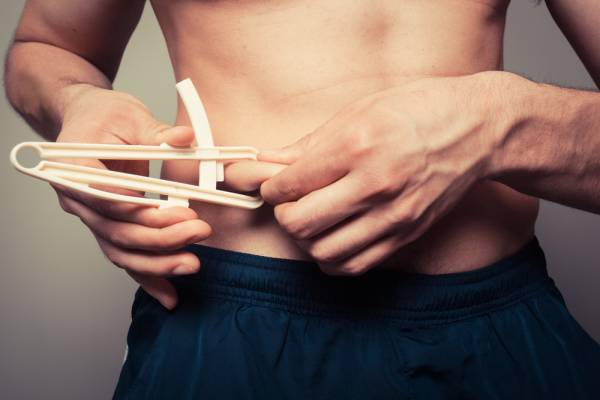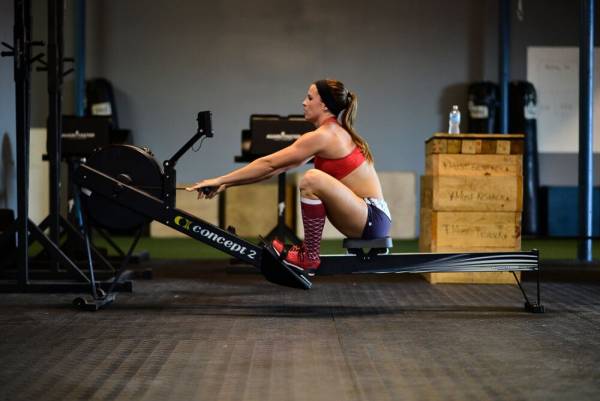My favorite times of my college football career were the off-season conditioning. I was an average football player, but I excelled at preparation. I worked as hard as anyone on my team at improving my ratings in a battery of physical metrics and performance tests. These pre/post test sessions validated the work and effort that I applied to my training. They also revealed the efficacy of the conditioning coach’s methods and programming.
Your training program should also include a level of objectivity. Without you or your coach holding your feet to the fire, you’re just chasing your tail. Today I’m going to share a few things for you to take into consideration when determining the effectiveness of your training program.
Having a coach to help you stay directed is a major component of training success.
Know Your Specific Goal(s)
Before I make some specific assessment recommendations, it’s important that you are detailed about your training goals. About 99% of people will say they want to “lose weight and get in shape.” That needs to become a more specific and detailed target. Here’s a list of steps to get you started.
1. State the goal in a way that is specific, measurable and realistic. “I want to lose fifteen pounds.”
2. State the trade-offs involved in achieving the goal. These are the uncomfortable parts. This step is about getting comfortable with being uncomfortable. Trading old bad habits for newer better habits. Examples:
- I can’t go out every Tuesday evening to the bar.
- I will not be able to go to eat four pints of frozen custard during the week.
- I will need to skip late-night television so I can get up in the morning.
3. State the benefits you get from working toward your goal. These are the good habits and things you are getting:
- I will be able to wear my old jeans.
- I will not grow weary in the afternoons.
- I will finally perform ten perfect push ups.
- I will sign up for that mountain bike race my friends having been asking me about.
- I will be healthier for the long term.
4. List the tasks required. This would include all the execution steps. For example:
- Make a specific shopping list.
- Prepare lunches and dinners in advance.
- Have water with me at all times.
- Have workout clothes ready.
5. Set a deadline. “I will lose the fifteen pounds in twelve weeks by the weigh-in date of …” You can also set interval deadlines.
6. Occasionally, it is appropriate to set a reward for an accomplished goal. A movie, afternoon off, a new book. But this reward should also come with a contingency: if you regress from your achieved goal within a twelve-month period, then there should be a penalty.
Know Your Training Load
Training load is a measure of your volume times the intensity. This is important in that you want to find your specific load for effective training. If you can only tolerate “X” minutes of training, but your friend needs double that to elicit a training adaptation, then you need to know that.
“Regardless of the assessments you select, it’s important to have a regular schedule to test your program against an objective standard.”
Training load can be calculated easily by multiplying your training rate of perceived exertion (RPE) by your training time in minutes. You can use the ten-point Borg scale for your RPE. So if you trained 25 minutes at a RPE of 7, your training load would be 175. (25 x 7 = 175)
You can also use advanced methods if you have a heart rate monitor and a tracking website associated with it. Regardless of your tools, relating training load to assessment data is an important connection.
Do Assessments (From Easy to Complex)
Assessments are typically general or specific. Since most readers here seek general physical preparedness (GPP), I’ll focus on those. If your initial level of fitness is low, then you are what is commonly referred to as a novice trainee. You should anticipate crazy good improvement in most if not all of these measures. If not, then your program is broken and you need a different approach.

- Resting Heart Rate – As your fitness improves, so does cardiovascular function. By measuring your resting heart rate upon rising each morning a gradual lowering of pulse will be detected. Measure radial pulse upon rising or better yet, use HRV or a heart rate strap technology.
- Body Composition – An effective training program when combined with a performance eating plan will optimize body fat levels. Measuring body fat requires some technical equipment, along with a skilled technician. Retest (using the same method) every four to eight weeks initially.
- Morning Weight – The whole world owns a bathroom scale. Not the best metric, but it can be useful for observing a trend. Clients who also share their weigh-ins with a coach increase the level of accountability.
- Waist Measurement – While your weight might not change, your waist size typically will. You can also gather import health information by dividing your waist by your height. If your ratio is greater than .5, then you have some work ahead of you.
- HRV – I consider the measurement of HRV to be the most significant performance tool of the last decade. HRV provides a snapshot of the body’s current level of readiness while also revealing long-term improvements that are not necessarily detected via other means.
Take Performance Measurements
I divide performance test into two different tiers. The first tier is lower skill and appropriate for the majority of trainees. The second tier is for a more advanced trainee and athletes with exposure to more complex movements.
Tier 1
- Push Ups (max) – Perform as many as possible in good form without failing. Stoppage in the plank position is permitted. This is a power endurance test.
- Pull Ups (max) – Perform as many as possible without releasing from the bar. This is another power endurance test.
- 500M Row – Fastest time to complete 500m. The O’Neill rowing test can also be used. The O’Neill test is a general endurance measure.
- Tabata Squat – Measures readiness and general endurance fitness. Form is of a premium, so you need to be able to squat. Your score is the lowest number of reps performed in any of the eight rounds. Our minimum is fifteen reps. Note: Serious consequences can result from taking a deconditioned trainee through all eight rounds. When in doubt, four rounds will be more than adequate.

Tier 2 (and Worthy of Further Consideration)
- 1RM Deadlift – Lower on the technical side, the deadlift measures strength in the pull. The problem comes when poor technique meets weak linkage and an injury results. Possible, but it depends on the athlete. If you have been exposed to other strength moves and are comfortable with them, then feel free to include these as part of your Tier 2 assessment. Just don’t go hog wild with every move.
- Vertical Jump or Long Jump – The tricky part of the vertical jump test is that an athlete could gain quality mass from a well-constructed program and this could result in reduced jump height. Using the Harman Formula you can determine the power produced: (Peak power (W) = 61.9 x jump height (cm) + 36.0 x body mass (kg) + 1,822)
Putting It All Together
Regardless of the assessments you select, it’s important to have a regular schedule to test your program against an objective standard. Novice athletes will improve quickly and can be retested every eight weeks. Depending on the goals, an advanced trainee should consider a quarterly assessment schedule. Without it, you are left with little or no objective data on the effectiveness of your program.
Check out these related articles:
- 7 Articles to Help You Choose a Good Coach
- Feedback From a Coach Can Improve Your Performance
- The Most Underrated Principle of Strength Training is Balance
- What’s New On Pulse Beat Fit Today
Photos 1 and 3 courtesy of CrossFit Empirical.
Photo 2 courtesy of Shutterstock.






